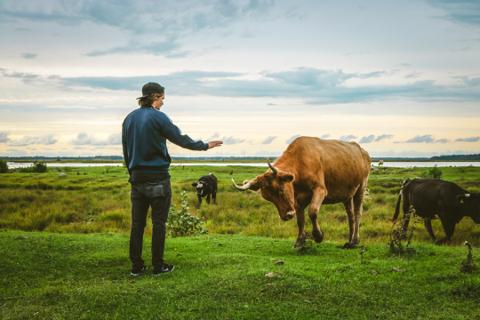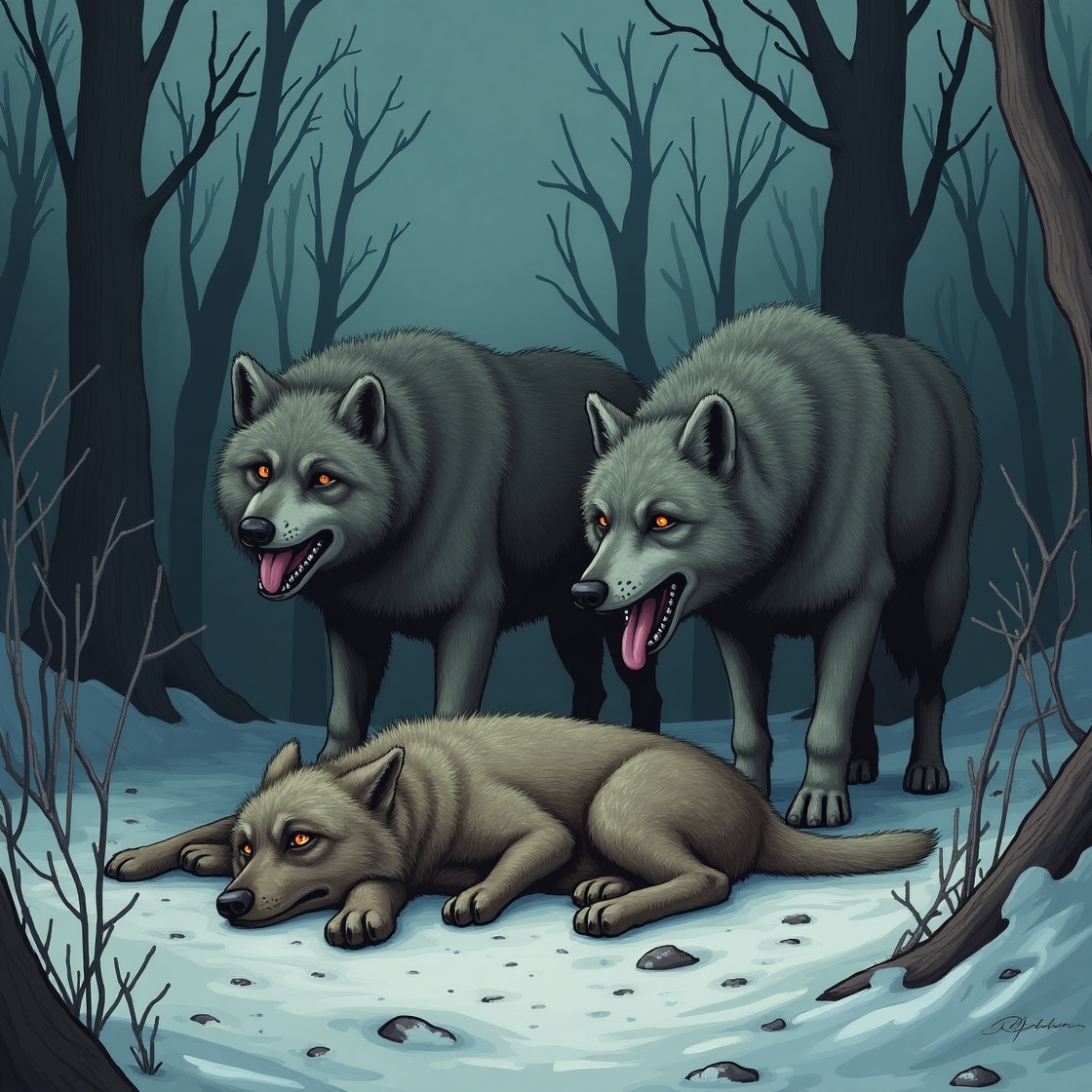Canine Distemper :
Symptoms, Treatment, Vaccination & Prevention
Learn about canine distemper symptoms, causes, diagnosis,
and treatment. Discover effective prevention strategies, vaccines, and the latest research

What is Canine Distemper?
Canine distemper (CDV) is a highly contagious viral disease affecting dogs, wildlife, and some non-human primates. Caused by the Canine Distemper Virus (CDV) , a member of the Morbillivirus genus, it spreads through respiratory secretions, contaminated objects, or direct contact. This zoonotic disease is fatal in severe cases, especially in puppies and unvaccinated dogs.


Understanding the Canine Distemper (CDV)
Viral Structure & Pathogenesis :
CDV is a single-stranded RNA virus with a lipid envelope, making it susceptible to disinfectants like bleach (1:32 dilution) and UV light. It targets lymphocytes and epithelial cells , leading to immunosuppression and systemic damage.
Key Receptors :
- SLAM (Signaling Lymphocytic Activation Molecule) in immune cells.
- Nectin-4 in epithelial tissues (linked to respiratory and intestinal symptoms).
Pathogenesis Stages :
- Initial Infection : Virus replicates in lymphoid tissues (e.g., tonsils).
- Viremia : Spreads to spleen, liver, and lungs.
- Secondary Viremia : Affects skin, nervous system, and gastrointestinal tract.

Symptoms of Canine Distemper
Early signs mimic the flu, progressing to severe systemic complications.
Common symptoms include :
- Fever and lethargy
- Coughing and sneezing
- Nasal discharge
- Vomiting and diarrhea
- Neurological issues (seizures, paralysis)
In advanced stages, CDV may cause hard pad disease (thickening of paw pads) and permanent brain damage. Puppies under 4 months are at highest risk.
Clinical Signs by Stage
Early Phase (Days 1–6):
- Fever (>103°F), lethargy, loss of appetite.
- Mild conjunctivitis and serous nasal discharge.
Mid-Phase (Days 7–14):
- Coughing, pneumonia, vomiting, and diarrhea.
- Hyperkeratosis : Thickened paw pads and nose.
Late Phase (Weeks 2–4+):
- Neurological symptoms:
- Seizures, muscle twitching, circling behavior.
- "Chewing gum fits" (involuntary jaw movements).
Mortality Rates:
- Puppies (<3 months): 80% fatality.
- Adults: 50% fatality without treatment.

High-Risk Environments
- Dog shelters, breeding facilities, and pet stores.
- Areas with dense wildlife populations (e.g., raccoons in urban parks).

Zoonotic Potential
- Rare human infections reported in immunocompromised individuals (e.g., HIV patients).
- Linked to measles-like symptoms and encephalitis.

Prevention Tip
Avoid contact between domestic dogs and wild carnivores.






Advanced Diagnostic Tools
Rapid Antigen Tests :
- Detect CDV antigens in blood or ocular discharge within 15 minutes.
- Accuracy : 85–90% sensitivity in early stages.
PCR Testing :
- Gold standard for confirming CDV in cerebrospinal fluid (CSF) or blood.
Imaging :
- MRI reveals white matter lesions in the brain, aiding neurological prognosis.

Distemper Outbreak or Wolves
- A distemper outbreak is tearing through wildlife populations, leaving a trail of death and chaos in its wake. Canine distemper virus (CDV), a highly contagious and often fatal disease, has infected foxes first, causing neurological damage, respiratory failure, and mass die-offs. As sick foxes stagger into human settlements, they spread the virus to wolves—natural predators who prey on them. Infected wolves, weakened and disoriented, abandon their natural hunting instincts and turn to easy prey: livestock. Lambs, calves, and sheep are being torn apart in fields across rural regions, while hunters refuse to act, paralyzed by fear that their dogs might contract the virus during wolf hunts. This inaction is not just reckless it’s catastrophic.
- The crisis is a domino effect fueled by human hesitation. Hunters, who once culled predators to protect ecosystems and livelihoods, now hesitate to pull the trigger. They fear that tracking or killing wolves could expose their hunting dogs to CDV, especially if the wolves are already infected. But this fear ignores a harsh reality: diseased wolves are walking reservoirs of the virus. By refusing to cull them, hunters allow the disease to spread unchecked, endangering not only livestock but also domestic dogs and wild ecosystems alike. Wolves infected with distemper are no longer apex predators they’re ticking time bombs, transmitting the virus to other wildlife and domestic animals through bodily fluids and shared environments.
- The economic and emotional toll on farmers is staggering. In 2023, French shepherds reported a 300% spike in wolf attacks during a distemper surge, with entire flocks decimated overnight. For rural communities, losing livestock isn’t just a financial blow—it’s a threat to survival. Yet environmentalists and policymakers urge restraint, clinging to the idea that wolves are keystone species essential to biodiversity. While healthy wolf populations do regulate prey species and stabilize ecosystems, diseased packs achieve the opposite. Starving, aggressive, and desperate, infected wolves disrupt natural balances, outcompete other predators, and force ecosystems into collapse. Culling is not eradication; it’s targeted intervention to remove diseased individuals and prevent further catastrophe.
- Historical precedents prove this approach works. In Yellowstone National Park, biologists culled infected wolves during a distemper outbreak in 1999, allowing healthy packs to rebound and ecosystems to recover. Similarly, Germany’s wolf management strategy combining selective culling of problem wolves with electric fencing and guard dogs—reduced livestock losses by 75% since 2010. Even Japan’s raccoon dog culls in 2016 demonstrated that paid bounties and oral vaccines can curb outbreaks when paired with proactive predator control. These examples highlight a critical truth: inaction breeds disaster, while strategic culling saves lives.
- Critics argue that wolves deserve protection regardless of disease, citing their ecological value. But this view ignores the ethical imperative to act when predators become vectors of mass destruction. Diseased wolves suffer gruesome deaths from seizures, paralysis, and starvation a fate far crueler than a swift, humane kill. Moreover, uncontrolled distemper outbreaks threaten far more than wolves. Foxes, raccoons, and even big cats are at risk, along with domestic dogs whose owners neglect vaccinations. Hunters must confront their fear: modern CDV vaccines (e.g., Nobivac, Duramune) are 98% effective against the virus, and properly trained hunting dogs can assist in culls without undue risk.
- The real enemy here is not wolves but human inertia. Hunters, farmers, and policymakers must unite to address this crisis with urgency and pragmatism. Governments should subsidize oral distemper vaccines for wildlife, fund paid bounties for infected wolf carcasses, and provide compensation to farmers for verified livestock losses. Vaccinate dogs, cull diseased wolves, and protect ecosystems these steps are not mutually exclusive. History’s lessons are clear: when faced with disease-driven ecological collapse, decisive action saves species, livelihoods, and entire landscapes.
- In the end, this is not a battle against wolves. It’s a fight to preserve balance in a world unraveling from fear, misinformation, and neglect. Hunters hold the key not as villains, but as stewards tasked with making hard choices. Letting diseased wolves roam unchecked dooms ecosystems, livestock, and dogs alike. Sometimes, the hardest decision is the only moral one.
